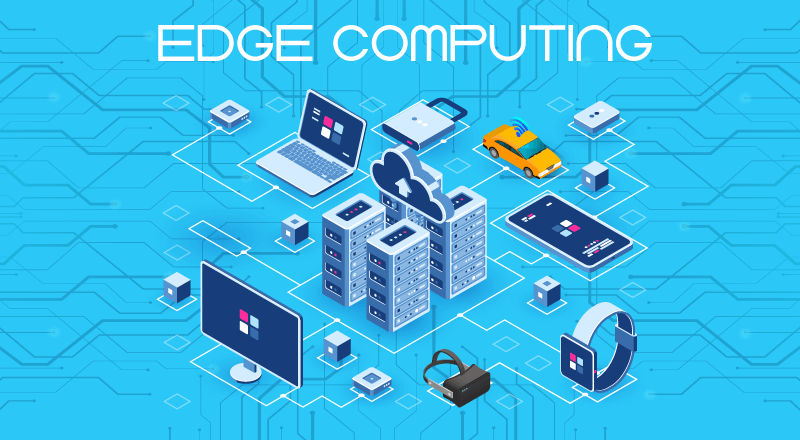Understanding the Basics of Edge Computing
Edge computing is rapidly becoming a cornerstone of modern technology infrastructure, revolutionizing how data is processed and utilized. With the surge of connected devices and real-time applications, understanding edge computing is essential for organizations and individuals navigating the digital age. This article delves into the fundamental principles of edge computing, its advantages, and how it is shaping the future of technology.
What Is Edge Computing?
 At its core, edge computing refers to the practice of processing data closer to where it is generated or consumed, rather than relying entirely on centralized cloud servers. This paradigm shift reduces latency, enhances data security, and improves the efficiency of data transmission.
At its core, edge computing refers to the practice of processing data closer to where it is generated or consumed, rather than relying entirely on centralized cloud servers. This paradigm shift reduces latency, enhances data security, and improves the efficiency of data transmission.
Key characteristics of edge computing include:
- Decentralized data processing: Unlike traditional cloud computing, edge computing enables local data processing at or near the source.
- Low-latency operations: By reducing the distance data travels, edge computing supports applications that demand real-time responsiveness.
- Scalability: Edge networks are flexible, accommodating the rapid growth of devices and applications in diverse industries.
For example, a smart home security system can process video feeds locally, ensuring faster threat detection and reducing reliance on remote servers.
The Advantages of Edge Computing
Edge computing offers numerous benefits, making it a valuable addition to modern IT strategies. Here are some of the most significant advantages:
Enhanced Performance and Reduced Latency
By bringing computation closer to the data source, edge computing minimizes latency. This is particularly critical for applications such as:
- Autonomous vehicles: Split-second decisions rely on immediate data processing.
- Industrial automation: Sensors and machinery benefit from rapid feedback loops.
- Healthcare systems: Real-time monitoring devices ensure timely interventions.
Improved Data Security and Privacy
Processing data locally at the edge reduces the risk of sensitive information being intercepted during transmission. This is particularly valuable in sectors like finance and healthcare, where data breaches can have severe consequences.
Optimized Bandwidth Utilization
With edge computing, only essential data is sent to the cloud for storage or further analysis. This reduces bandwidth costs and ensures efficient use of network resources, especially in areas with limited connectivity.
Reliability and Resilience
Edge devices can function independently, even during network outages. This ensures business continuity and supports critical applications in remote or disaster-prone areas.
Real-World Applications of Edge Computing
Edge computing has far-reaching implications across industries, driving innovation and operational efficiency. Some of its most prominent applications include:
Internet of Things (IoT)
IoT devices generate massive amounts of data, which edge computing processes locally for faster insights. Applications range from smart cities to wearable fitness trackers.
- Smart cities: Traffic lights and surveillance systems use edge computing to manage congestion and enhance public safety.
- Wearable technology: Health metrics from devices like smartwatches are analyzed locally for real-time feedback.
Gaming and Entertainment
The gaming industry leverages edge computing to deliver immersive experiences with minimal latency. Cloud gaming platforms, for example, process graphics and commands closer to the user, ensuring seamless gameplay.
Retail and Customer Experience
Retailers use edge computing to enhance in-store experiences. Smart mirrors, personalized advertisements, and inventory tracking rely on local data processing to deliver real-time value.
Manufacturing and Industrial Automation
Edge computing powers smart factories, where sensors and machines communicate to optimize production processes. This reduces downtime, improves quality control, and enhances overall efficiency.
The Future of Edge Computing
As technology continues to evolve, edge computing is poised to play a pivotal role in enabling the next generation of innovations.
Key trends to watch include:
- Integration with AI and Machine Learning: Edge devices are increasingly capable of running AI algorithms, enabling advanced analytics and decision-making at the edge.
- 5G Connectivity: The widespread adoption of 5G networks amplifies the potential of edge computing by offering ultra-low latency and high-speed connections.
- Sustainability Efforts: Edge computing reduces energy consumption by minimizing the need for large data centers, contributing to greener IT practices.
Moreover, industries such as augmented reality (AR), virtual reality (VR), and telemedicine will rely heavily on edge computing to meet their performance demands.
Edge computing is reshaping how we process and interact with data in a connected world. Its ability to deliver real-time insights, enhance security, and support a broad spectrum of applications underscores its importance in the digital age. As organizations continue to embrace this technology, edge computing will remain a driving force behind innovation and efficiency.
References
- What is Edge Computing? - IBM
- Edge Computing in IoT - Cisco
- How Edge Computing Works - Microsoft
- Edge Computing Benefits - AWS
- Edge and Cloud Comparison - Gartner
- 5G and Edge Computing - Qualcomm
- AI at the Edge - NVIDIA
- Edge Computing Explained - Forrester
- Edge Security - Palo Alto Networks
- Future of Edge Computing - Deloitte Insights





























































